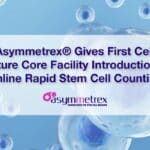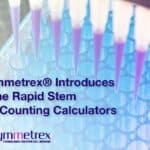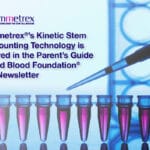What are human pluripotent stem cells?
Pluripotent stem cells are cells that have the ability to make in culture fetal-like cells that derive from any of the three main developmentally distinct layers of developing embryos. These layers are called endodermal, mesodermal, and ectodermal. Each layer gives rise to mature cells in the organs and tissues located in respective topological distinct compartments of the final mature body plan, including inside, middle, and outside, respectively. In experimental animals like the mouse, pluripotent stem cells can be shown able to produce derivative mature cells in every tissue of the mature body. However, such demonstrations are not possible with human pluripotent stem cells, because they would require putting pluripotent stem cells into human embryos and letting the embryos develop to full term babies.
Where do pluripotent stem cells come from?
The two main types of pluripotent stem cells are not naturally occurring. Embryonic stem cells are produced by removing embryonic precursor cells from early embryos. The removal kills the source embryo. Induced pluripotent stem cells are produced by genetically reprogramming mature cell preparations with a collection of specific gene regulation factors.
Are adult stem cells pluripotent?
No. They are either unipotent, producing only one other type of cell, or multipotent. In the case of multipotent adult stem cells, the several or more types of different cells they produce are restricted to one organ or tissue; and therefore restricted to one developmental layer as well.
What are IPS cells?
An abbreviation for Induced Pluripotent Stem cells that are produced by genetically reprogramming mature cell preparations with a collection of specific gene regulation factors. They have very similar properties to pluripotent embryonic stem cells. Whether their properties are identical to embryonic stem cells is disputed. However, a careful analysis of the variance of properties among independent embryonic stem cell lines compared to the variance between IPS cell lines and embryonic stem cell lines has not be undertaken.
Why are iPS cells also called reprogrammed cells?
There is metaphoric language in the field of stem cell biology that cells adopt different programmings of gene expression that advance along a linear progression with time, with less differentiated cells being earlier in the continuum. Since iPS cells are produced by taking presumably later differentiated cells in the continuum and returning them to an earlier less programmed state, the metaphoric description “re-programmed” was applied and is now a widely practiced usage.
What are GPCR and what is the protocol?
GPCR is an abbreviation for “G protein-coupled receptors,” a large family of cellular factors involved in regulating cellular responses to both extracellular and intracellular signals. A protocol is a technical procedure that is often repeated as a routine in laboratories.
What is a cell culture product protocol?
A routine procedure for how a cell culture product (e.g., culture medium) is constituted or used.
What is 3d cell protocol?
A routine procedure that involves placing and/or culturing cells in a 3-dimensional matrix or scaffold designed to mimic a natural extracellular matrix in the body.
What are neural cells?
Cells that make up the nervous system.
What is a progenitor cell?
An early precursor cell that can divide to produce more differentiated cell types that are later in its committed lineage. However, it is unable to renew its own initial state.
Where are neural stem cells?
Cells committed to a neural lineage that has the ability to divide and maintain their own undifferentiated multiplying state while simultaneously producing non-renewing neural progenitor cells that will divide and produce differentiated cells that mature into terminally-arrested neuronal cells.
Can progenitor cells self-renew?
By definition, no. During embryonic development, early progenitor cells divide to yield developmentally more mature cells with complete progression and loss of their own state. In children and adult tissues, progenitor cells are renewed by the divisions of self-renewing stem cells. All progenitor cell divisions progress to terminal division arrest by their fully differentiated progeny cells.
What are mesenchymal stem cells?
A poorly defined type of stem cell found in many different interstitial compartments that are spaces among and between other tissues, including in bone marrow, under the skin, in fat tissue, in the wall of the umbilical cord.
What does mesenchymal mean?
From its Greek etymology, it means “of the stuff in the middle.” It refers the to loosely organized connective tissue that fills the space between other tissues. Also called the interstitial tissue.
Are mesenchymal stem cells multipotent or pluripotent?
Multipotent. Despite their remarkable range, there are many tissue lineage types that mesenchymal stem cells cannot produce and their potency is limited to tissues descendent of one embryonic layer, mesoderm.
What are human primary cells?
Strictly, human tissue cells after explantation into culture without any passage of the initial “primary” cell culture. Later, human cells that have been serially cultured before reaching the characteristic total cessation of cell division were called primary cell strains or primary cell lines. In early passages, these cultures contain human adult tissue stem cells.
What is an example of a primary cell?
Any cell that is found in a strictly primary cell culture.
What is primary cell culture?
Strictly, the initial culture of a freshly isolated preparation of tissue cells with no passage of the culture.
Want to learn more about Asymmetrex and its services? Contact us today! We would love to hear from you.






Leave a Reply